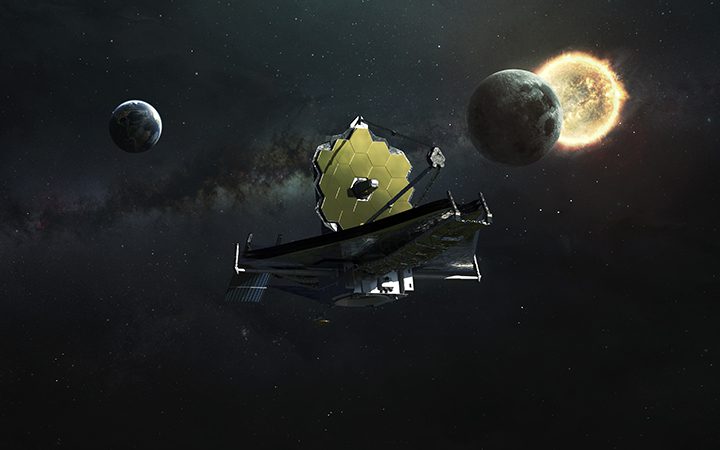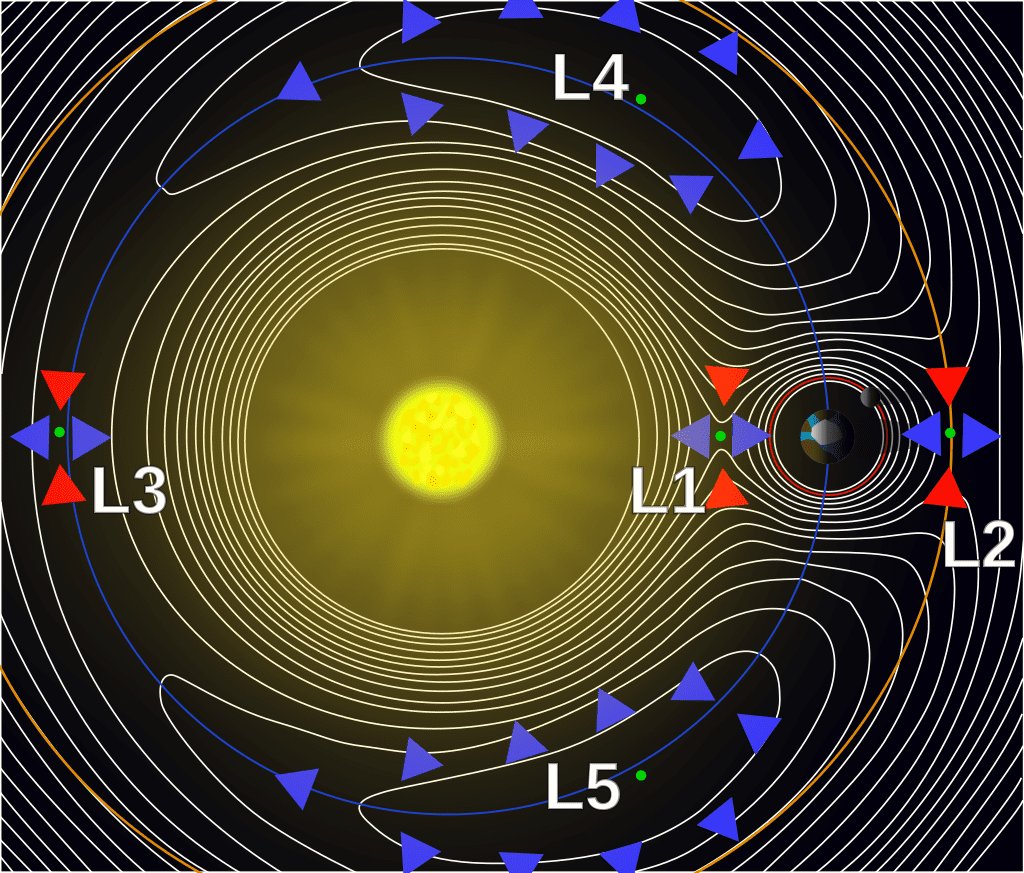
The James Webb Telescope, the long-awaited successor to the Hubble Telescope, was launched on Christmas Day, December 25th, 2021 and has, over the course of several weeks, been heading out to its final destination, an odd point in space called L2. While Lagrange points are well known to astronomers, they, and why the are important, probably aren’t as well known to most other people.
The first three Lagrange Points were discovered by Swiss mathematician and polymath Leonhardt Euler discovered primarily through his studies on the nature of Gravity in the wake of Newton’s work on the subject. The two subsequent Lagrange points were identified in a paper by French mathematician Joseph-Louis Lagrange a few years later in 1777, and the five points collectively became known as Lagrange points.

Lagrange points occur due to the nature of gravitational fields, and have to do with the dynamics of three body problems. The first two Lagrange points, designated as L1 and L2, are places where the gravitational body of the Sun and the Earth (or really, any two large orbiting bodies) cancel out. This means that at this point a saddle point emerges, where the pull from the Earth to a fictitious third body exactly equals the pull from that body to the Sun to create a local maximum. Additionally, because of angular momentum, things that are along the orbit of L1 or L2 tend to get swept into this point.
Such an orbit is quasi-stable – if an object is pushed away from this point radially by even a small amount, it will eventually move in the direction of the push, but because there are no forces acting on it, this may take years or even centuries to happen naturally. As a consequence, L1 and L2 are very good places to park things like space stations and observational satellites. The Webb telescope is at L2, located about a million miles from the Earth and about 94 million miles (150 million kilometers) from the Sun. Note that at that distance, the Earth and the Moon are seen as a single mass positioned at their center of gravity, though it’s worth noting that the Earth and the Moon also have their own Lagrange points that are considerably less stable.
The third Lagrange Point (L3) is directly opposite the Sun from the Earth. Like L1 and L2, it’s quasi-stable, and it shares the same orbit as the Earth. Like L1 and L2, it’s saddle-shaped, meaning that material tends to gather there but may remain in that orbit for only a limited period of time.
The final two Lagrange points, L4 and L5, are stable, and are formed at the equilateral triangle with the third vertex being L3. These are different in that the forces balance out in a fairly wide area around these two points, the consequence of being a local minimum. It is actually a place where asteroids are regularly trapped for potentially millions of years, and both L4 and L5 can act as virtual planets in their own right with smaller debris orbiting around those Lagrange points. Astronomer Gerald K. O’Neil proposed the idea of setting up what would become known as an O’Neil colony, a large liveable space habitation, at L5, leading eventually to the creation of the L5 Society dedicated to making that vision a reality.

The Earth/Moon system is relatively clean (though there are nearly a dozen satellites at the various Lagrange points) currently, but you can see the principal at work with the Trojan asteroids, located in the orbit of Jupiter at the planet’s L4 (the Greeks) and L5 (the Trojans) points. It’s worth noting that these Lagrange points may very well have served a critical part in Earth’s evolution – by capturing rogue asteroids, the L4 and L5 points (along with the L3 Hildas) may very well have kept planet-killing asteroids locked in space rather than pummeling the surface of the Earth.

